This was published 1 year ago
Music festivals are in crisis. So where have all the young people gone?
The $2.7 billion sector has a real job to do if it is to woo the next generation of punters - and not all players will succeed.
By Karl Quinn
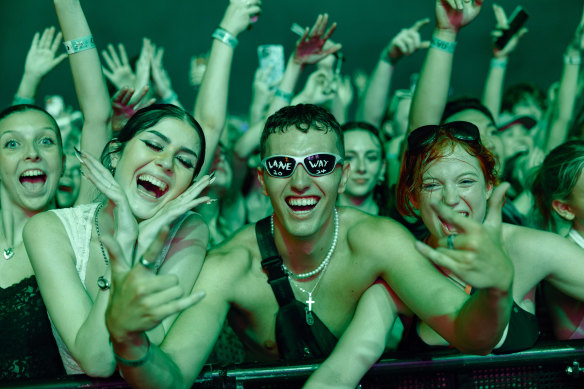
Record crowds lapped up the good times at Laneway in 2024, but some other music festivals have struggled to attract big numbers.Credit: Daniel Boud
Amelia Needham loves live music – she’s been to see Phoebe Bridgers, Arctic Monkeys, and Taylor Swift, as well as many smaller local acts – but so far the iconic Australian music festival remains a foreign experience to the 17-year-old Year 12 student from Coburg.
“I was considering going to Laneway but the prices, and it being an all-day offering, made me think it’s not really my thing,” she says. “A few of my friends have gone to festivals, said they enjoyed it, but that it sometimes feels a little dangerous with people doing drugs and drinking. One of my friends said she didn’t feel safe all the time, and I felt that could ruin the day for me.”
According to a survey just released by Music Victoria, an independent peak body representing the contemporary music sector, Needham is far from atypical.
The Perceptions of Live Music report surveyed 500 young Victorians in five age brackets – 16-18, 19-22, 23-25, 26-30 and 31-35 – to gauge their attitudes to and intentions regarding attendance at live music events. And it found that while 80 per cent of people under 35 expressed a “willingness to attend live music events at least once a year”, the barriers to acting upon that impulse were strong and growing.
Perhaps the most challenging finding was that while 52 per cent of respondents 19 and older had been to a music festival by the age of 18, only 42 per cent of those under 18 said they had attended a festival in the past year. And for an industry that needs to constantly replenish its customer base, that’s a problem.
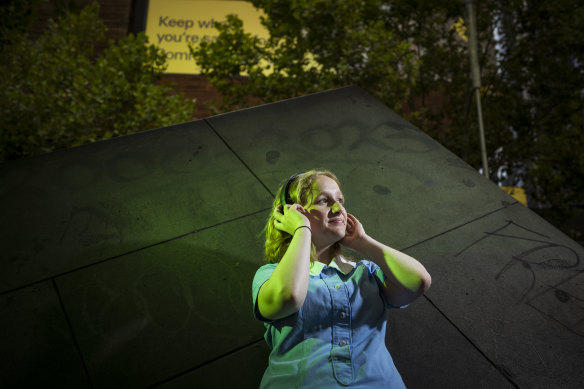
Like an increasing number of people her age, Amelia Needham, 17, has never been to a music festival.Credit: Chris Hopkins
“You need a first experience to get hooked [on live music], and you need it to be great,” says Music Victoria chief executive Simone Schinkel. “Once you’ve had that experience, it’s a really easy sell. But we need to get you through the door, and if we can’t get you off the couch and to the door, it’s very hard to translate that into a lifelong obsession.”
The survey, released on Wednesday, comes a week after the regional touring festival Groovin The Moo was cancelled because of poor ticket sales. Schinkel hopes other state groups will do their own research, and collectively feed it to the new federal body Music Australia, with an eye to developing a plan to get the sector through the tough times it currently faces.
Since 2020, more than 20 festivals have been relocated, postponed or cancelled outright, many as a result of extreme weather events including rain, flood, heat and fires. Additionally, COVID shut down huge swathes of the live music industry for much of 2020 and 2021.
The true state of music festivals ought to become clearer when Creative Australia releases the first-ever survey of the sector, estimated to be worth $2.7 billion annually, later this year. But many in the industry believe it is only now beginning to feel the full effects of the COVID years.

Stormzy performs at the Sydney leg of Laneway in February. Credit: Edwina Pickles
The possibility that an event might be cancelled due to a pandemic, extreme weather, or some other issue, has led to a reticence in purchasing until much closer to the date. And that plays havoc with promoters’ calculations, based on historical sales tracking data, about whether and when they will cover their costs, which in turn is factored into the tough calls being made about whether to go ahead (it might be better, for instance, to pull the pin early and blow the deposit on an artist’s fee – which might be 50 per cent, depending on the contracted terms – than to play to a half-capacity crowd and be liable for everyone’s full fees).
There’s also been the emergence of a strong aftermarket, in which tickets can often be bought for less than face value; even the stalwart Golden Plains is seeing the emergence of cheaper tickets for resale for next month’s event.
The rise of TikTok has also sped up the life cycle in which an artist can go from unknown to super hot, meaning a line-up booked months or more in advance can risk looking stale to a young social media-minded punter.
And, perhaps most importantly, many of those young would-be attendees have simply not had the chance to develop the habit.
“There is a generation who missed out on those coming-of-age, life-affirming moments,” says Schinkel. “We’ve had a really fundamental shift. If you grew up in a pandemic, going into an enclosed space that’s small and meant to hold lots of hot sweaty bodies just might not be the same vibe you’re calling for. It’s also really hard when we have a cost-of-living crisis, when tickets are going up.”
Price is definitely a factor for Needham. She works part-time and pays for her own tickets, and at $200 or so for a top-line artist, she has to think hard about whether she really wants to go.
“It’s a lot of money for one night,” she says. “The high prices really make you question if it’s worth the money.”
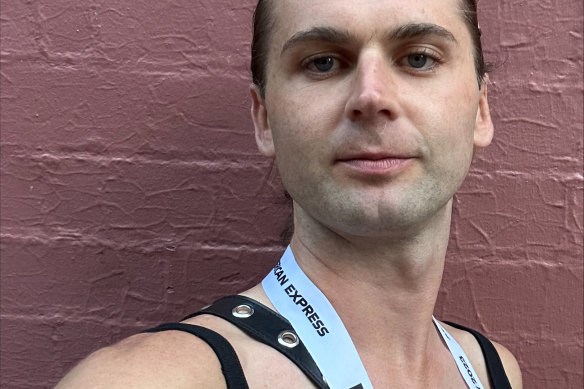
Mitch Wilson, general manager of the Australian Festival Association, says his sector is facing a massive challenge.
Mitch Wilson, general manager of the Australian Festival Association, believes the sector is facing its biggest challenge since the collapse of Big Day Out (in 2014) and Soundwave (2015).
“It’s really quite tough at the moment,” he says. “There’s a bit of a perfect storm: increased supply costs; increased artists fees because of the weakness of the Australian dollar; increased insurance costs; and the changes in audience ticket-buying behaviour, especially with regard to what young people are looking for. It’s really easy to lose a substantial amount of money, and promoters are looking at that and saying, ‘I don’t know if I’m up for that’.”
It’s not all doom and gloom, though; some genre-specific festivals – particularly those in the electronica and country space – are doing well, Wilson says. But for some, the economics just do not add up.
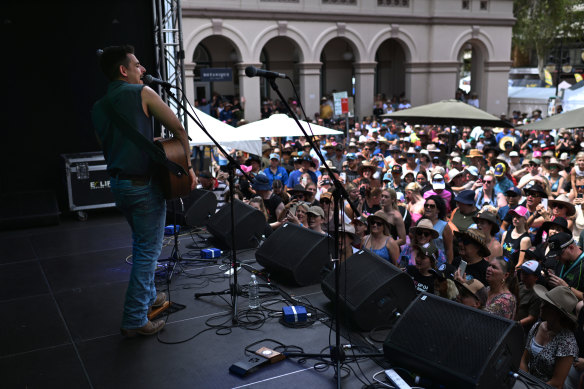
James Johnston performs at the Country Music Festival in Tamworth in January. Genre-specific festivals are performing better than broader offerings at the moment.Credit: Dan Peled
One such is the Meadows Music Festival. After nine years in which the event in western Victoria grew from an informal gathering for 400 people to a ticketed event with a cap of 1750, founder Cameron Wade was forced to make the difficult call to sit out 2024 rather than risk losing a bundle of money.
“We had a bump due to pent-up demand coming out of COVID, but we were 55 per cent down in ticket sales in 2023 on the year before,” he says. “That cost us most of our savings.”
Wade is an engineer by trade; Meadows is a sideline and a passion project, and any thoughts of turning it into a day job have been shelved for now. But he’s critical of those events that announce their dates and line-ups, but pull the pin when things don’t go quite as well as they had hoped.
“Once you put an event on sale, I personally think it’s your obligation as a business owner to run it,” he says. “You’ve got to wear that cost if it goes bad, it’s the right way to behave. It’s a bit frustrating to see events [cancel], because it’s certainly degrading people’s confidence.”
Danny Rogers, co-founder of the 19-year-old Laneway Festival, which has just had its most successful season ever, is less pessimistic. “There are challenges,” he says, “but the festival market is not in crisis.”
It is critical, he says, to have young people on hand to help keep programming current. “If you think you know because you’re awesome with music, you’re irrelevant,” he says. “I’m 49 – I don’t know what a 15-year-old loves. But what I do know is that the things they love are great. It gives me hope.”
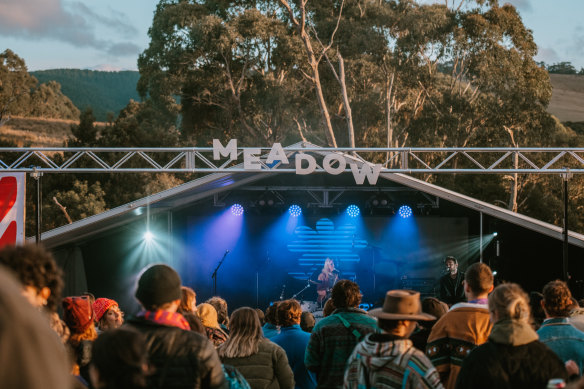
The 2023 edition of the Meadow Music Festival was its ninth. It hopes to return in 2025 after sitting out this year.Credit: Kirtsy Renee
The sweet spot in terms of audience renewal is, he says, 17-24. But it’s a balancing act. Anything new and fresh needs to sit well with the overarching brand, and to make sense in the line-up as a whole. And as a general rule of thumb, that line-up ought to represent a Venn diagram of overlapping tastes and styles in which anyone can find three or four acts that excite them, and motivate them to buy a ticket.
“I definitely don’t think people are over festivals,” Rogers says. “I think there’s changes, but kids are still really excited. When we announced our line-up last year I was getting a lot of texts from friends my age who were saying, ‘I have no idea who these people are, but my kids are buzzing’, and I was, ‘Yes!’”
“If they’re not selling, there’s a reason,” he adds. “And we’re not immune to that. We’re all only as good as our latest offering.”
Contact the author at kquinn@theage.com.au, follow him on Facebook at karlquinnjournalist and on Twitter @karlkwin, and read more of his work here.
A cultural guide to going out and loving your city. Sign up to our Culture Fix newsletter here.